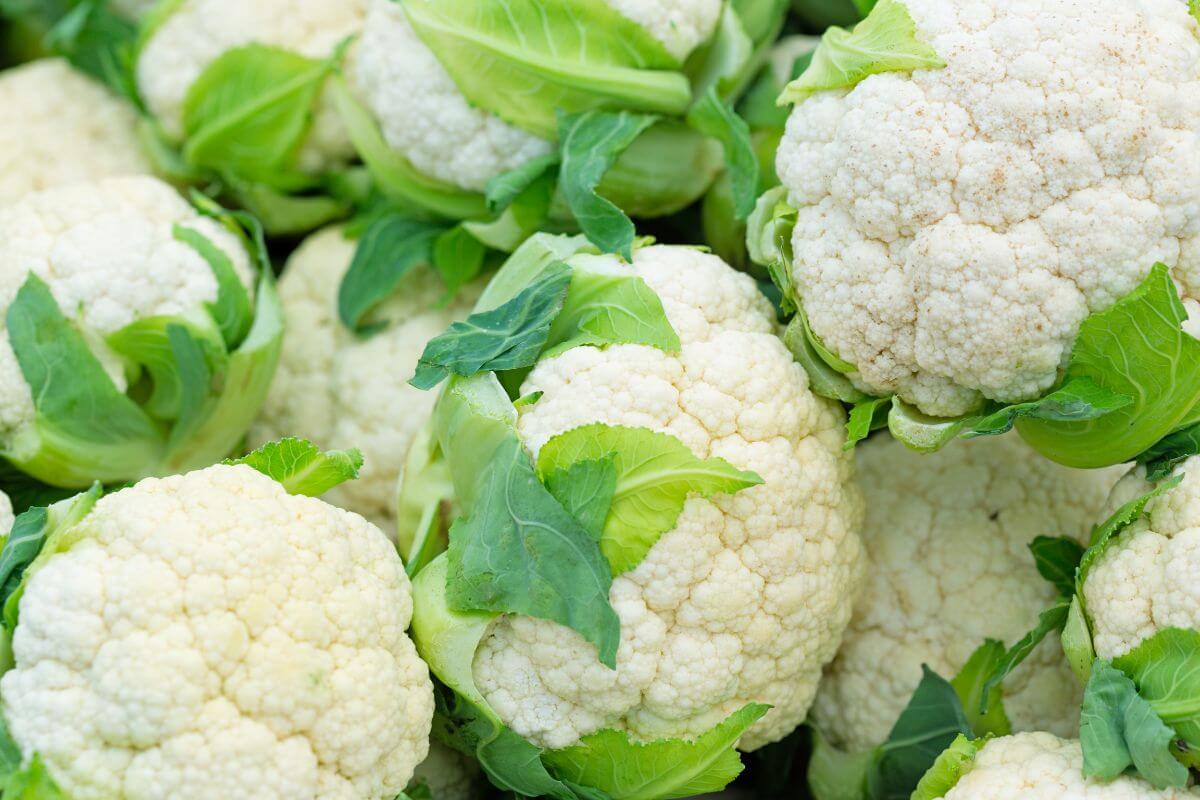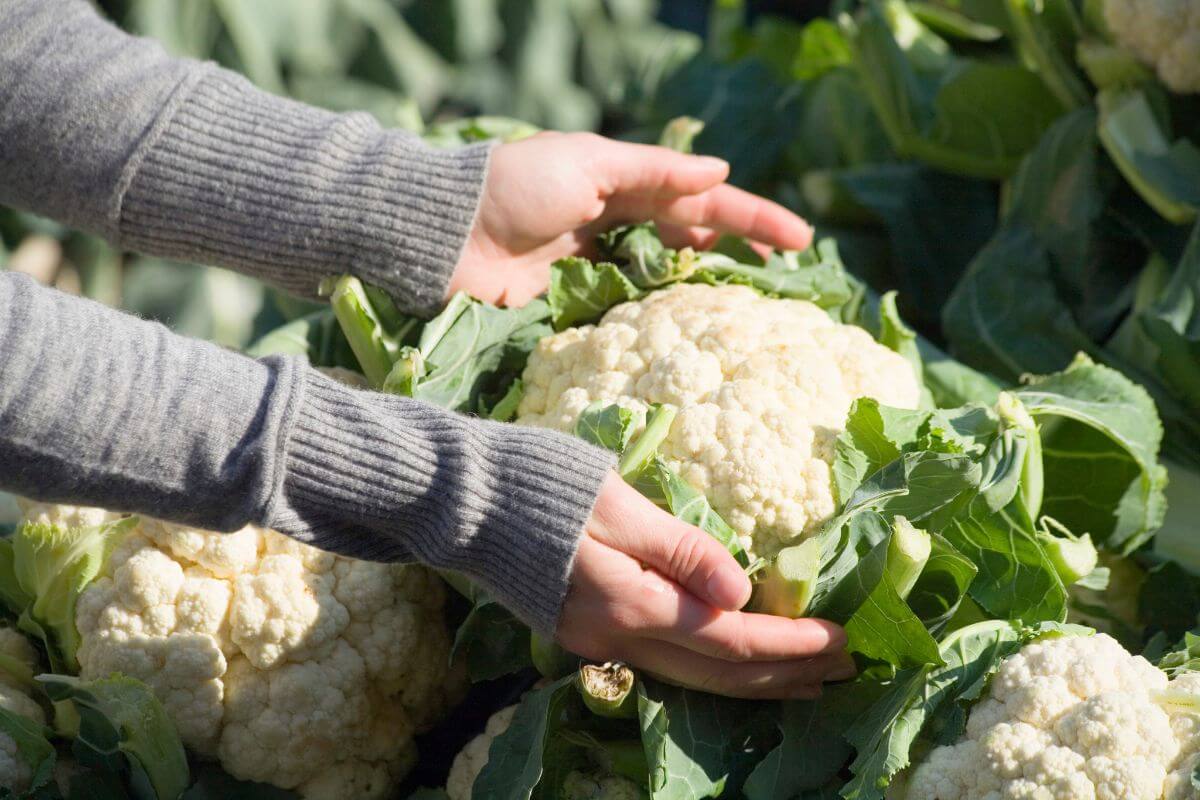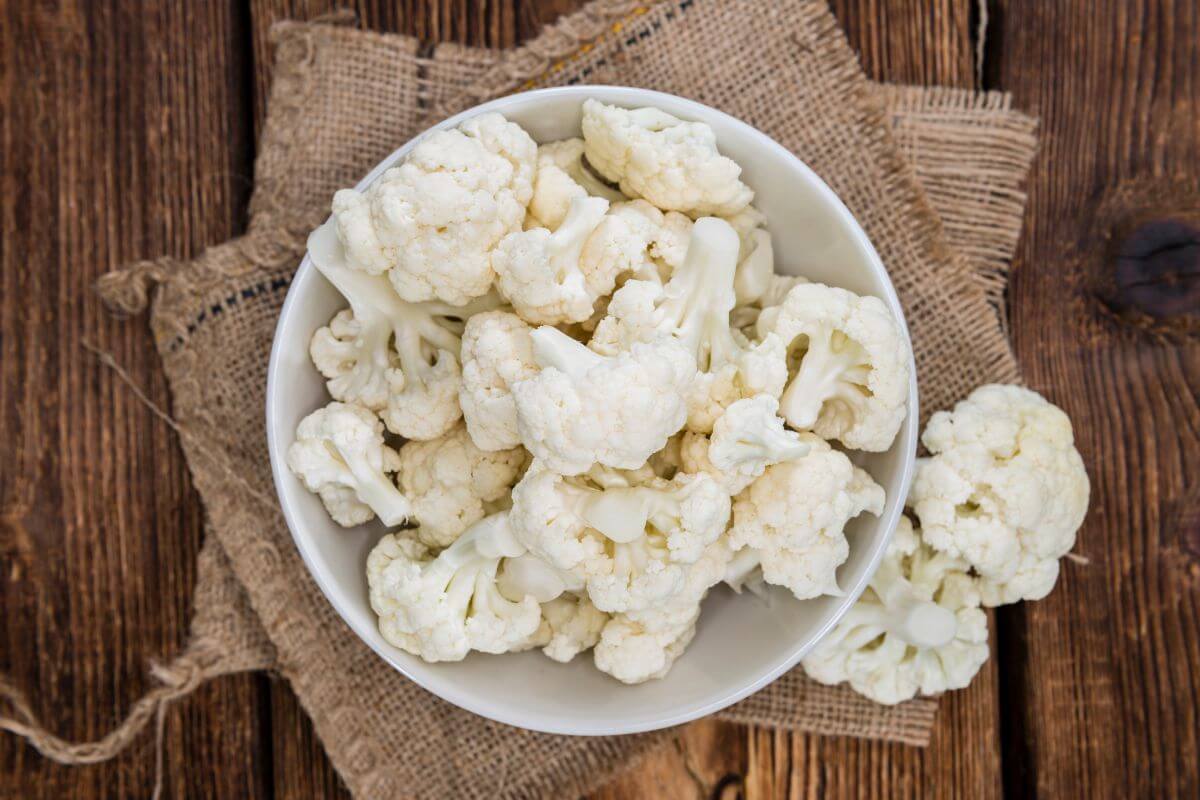Today, cauliflower is an important vegetable crop worldwide, with production exceeding 100 million tons annually. In recent decades, however, some researchers have questioned whether cauliflower has always been man-made.
Yes, cauliflower is man-made. Cauliflower is one of several vegetables, along with broccoli and Brussels sprouts, that have developed from the wild mustard plant. It was selectively bred by man over centuries for its desirable characteristics.
Learn more about cauliflower’s origins, how humans selectively bred cauliflower, and much more.
- Related Article: Man-Made Vegetables and Fruits List
Cauliflower History

Cauliflower, botanically known as Brassica oleracea, is considered to have been domesticated from wild plants in the area of the Mediterranean where there are many varieties of the Brassica oleracea present in this area.
It finds its origins on the island of Cyprus and later it migrated to other Mediterranean states such as Egypt, Spain, Italy, Turkey, Syria, and eventually the northwest portions of Europe.
Both cabbage and cauliflower are descendants of the same ancestry found in a plant with similarities to kale, the Brassica oleracea L. var. sylvestris L. This species of wild cabbage can still be found in North Africa, as well as both Southern and Western Europe.
Extensive cultivation of European cauliflower began in Italy in the 1500s. Afterward, the Italian cultivars were sent to England, France, Germany, and the Netherlands where other local versions were bred.
At some point between the 12th and 13th centuries, cauliflower made its way to western Europe. But it became a food staple thanks to widespread cultivation in the 16th century. Most cauliflower types descend from the Italian ancestral species.
It is said that they actually were present in ancient Rome as the first known mention of cauliflower appeared in “Natural History”, written by Pliny the Elder who was a Roman philosopher and a naturalist.
Is Cauliflower Man-Made?
With its unusual appearance, the automatic response might be that cauliflower must be man-made, especially considering that it grows in a variety of colors like purple, green, orange, and the more well-known white hue.
Cauliflower is certainly man-influenced. While not created in a laboratory, it is one of the many man-made fruit and vegetables that are the result of selective breeding.
Cauliflower developed from wild mustard or cabbage. Ancient farmers probably selected the best mustard plants featuring the largest flowers and bred them. The results are today’s broccoli and cauliflower.
The color varieties of cauliflower are the result of mutations.
- White cauliflower is the most well-known and common cauliflower color.
- Orange cauliflower is very recent, as it is the result of a Canadian mutation in the 1970s, and it boasts about 25% more vitamin A than the common white version.
- Purple cauliflower contains an antioxidant present in both wine and red cabbage
- Green cauliflower is even more recent as it was developed in the 1990s as a crossover between cauliflower and broccoli.
So, is cauliflower man-made? In the sense that it is a result of selective breeding, yes. It is not a laboratory invention, and it is not GMO or genetically modified by man.
Selective Breeding of Cauliflower

When we refer to a vegetable as “Man-made,” we are actually referring to “selective breeding.”
Selective breeding is particularly popular in animal breeding. Parents are chosen with specific traits in the hopes that their offspring are even better.
Plants, both fruits and vegetables, can be bred to achieve specific characteristics and improve desired features without any help from a research laboratory.
Taste, size, color, and more are improved upon using the selective breeding process on all types of cauliflower.
Cuttings, layering, seeds, or grafting are all techniques used in selective breeding. However, one of, if not the defining characteristics of selective breeding, is the amount of time necessary to achieve the desired result.
It may be decades or centuries to achieve your desired traits, or it may even be longer.
Historically, selective breeding was used to create stronger and larger plants. Nowadays, selective breeding is much more refined and can be implemented to achieve specific objectives like taste, color, size and shape.
From the beginning of farming, farmers have always preferred plants that yield and produce more. The quest for better flavor, edible pulp, and fewer or no seeds is still ongoing.
Cauliflower Benefits

One of the benefits of cauliflower is that all parts of this plant are edible, including the stems and foliage. People normally eat just the head of cauliflower, but some will also eat the stem and leaves. They may use the leaves as a vegetable in soups or salads.
Cauliflower is a healthy vegetable with many health benefits. It’s low in calories and high in vitamin content, so it’s a great vegetable to include in your diet as it poses little to no risks to your health.
The health benefits of eating cauliflower include:
- Helps lower cholesterol levels
- It is rich in antioxidants which protect against cancer
- It has anti-inflammatory properties
- Improves digestion
- Reduces risk of heart disease
- Lowers blood pressure
- Protects against diabetes
- Boosts immunity
- Aids in weight loss
- Helps prevent constipation
Man-Made Cauliflower Final Thoughts
Cauliflower as we know it, would not exist had man not intervened with the Brassica oleracea, its ancestor. This wild plant is also the ancestor of Kale, Brussels sprouts, cabbage, broccoli, and cauliflower. Each of these plants developed from a different part of its ancestor, and they have greatly enriched our tables.
Cauliflower appeared after years of selective breeding and was not the product of GMO laboratory manipulation. We have farmers throughout the centuries to thank for what we have today, a nutritious and tasty vegetable to bring to our tables.
Read more about other man made fruits and vegetables:

